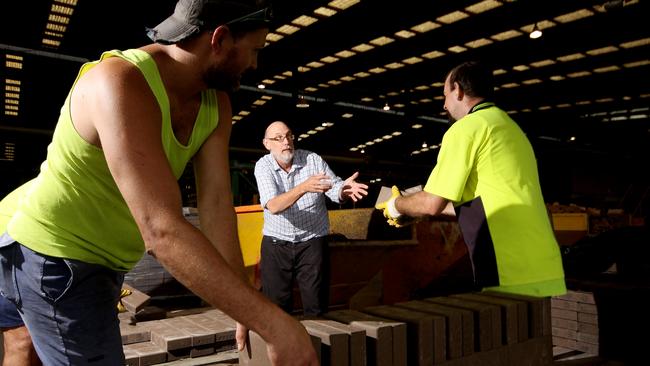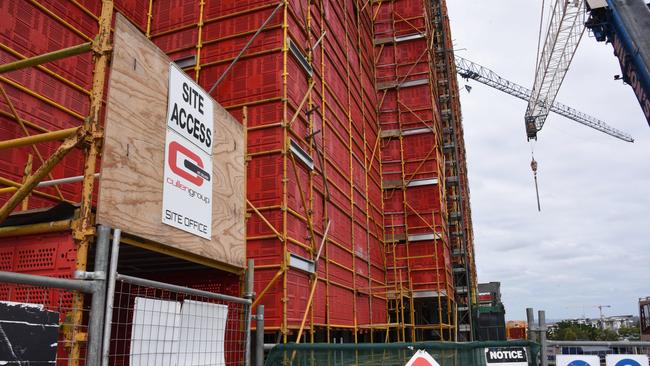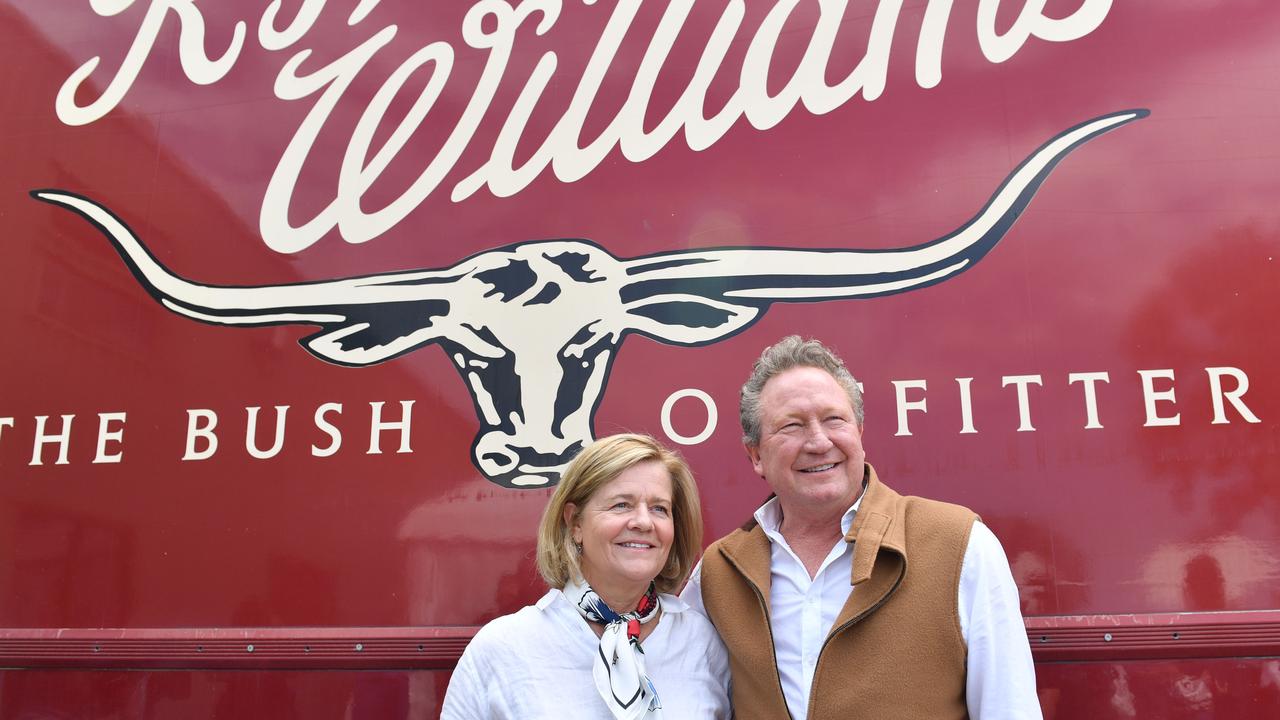The bad sign for Queensland’s construction industry
With century-old brickmaker Claypave going into administration, there is clear evidence Queensland’s construction industry is battling. But experts say there are reasons to remain positive.
QLD Business
Don't miss out on the headlines from QLD Business. Followed categories will be added to My News.
IF YOU wanted clear evidence that Queensland’s construction industry is battling, look no further the troubles facing century-old brickmaker Claypave.
The Dinmore-based company was put into administration last week blaming a downturn in building activity that meant fewer orders for the bricks and pavers it has produced from the same site since the 1880s.
Master Builders Queensland deputy chief executive Paul Bidwell said as building slowed there would be a trickle-down impact on companies such as Claypave.
“Claypave entering administration is a bad sign,” said Mr Bidwell. “We think it is going to be a tough year but not as hard as in other states.”
According to new research produced by Queensland Economic Advocacy Solutions for Master Builders, there were 312 construction industry insolvencies in the state in 2017-18.
Queensland building industry taskforce starts work
QBCC takes aim at accountants keeping struggling builders afloat

The average number of insolvencies over the past nine years has been 373 with a high of 497 reached in 2012-13. The construction industry is now the state’s worst sector for insolvencies after business and personal services.
“I don’t think insolvencies are getting worse,” said Mr Bidwell. “But because we rely on the subcontractor model there is a substantial impact because of the trickledown effect that occurs when a builder becomes insolvent.”
IBISWorld senior industry analyst Tom Youl said brickmakers, including small operators such as Claypave, had suffered from volatile revenue over the past five years due to fluctuations in housing construction.
“Strong dwelling commencement numbers fuelled industry growth at the beginning of the period,” said Mr Youl in a report. “However, a downturn over the past three years has almost offset earlier revenue gains.”

The sector also had been hit as Australians moved away from single-unit housing, which tends to have a large brick component, towards multi-unit apartments.
Insolvencies in Queensland’s construction industry represent 19.9 per cent of all business insolvencies in Queensland, slightly higher than the construction industry’s 17 per cent total share of the Queensland business community.
More than 1400 companies in the state’s construction sector have entered administration in the past five years including Cullen Group, CRCG-Rimfire and Trac.
Even big players have come under scrutiny, with the Queensland building watchdog forcing British construction giant Laing O’Rourke to pump $32 million into the business last month in order to maintain its building licence.
According to insolvency firm SV Partners, Queensland’s construction firms were at greatest risk of financial failure over the next 12 months, with about 250 expected to face the risk of going under. Nationally 1192 construction firms faced “high to severe financial risk.”
But Mr Bidwell said it was not all bad news for the sector. He points out the construction industry does better when the number of insolvencies taken as a measure of the total number of operators in the sector were taken into account.

Last year, there were only 4.1 insolvencies per 1000 businesses compared to 27.6 for mining, 13.7 for the business and personal services and 5.2 for retail businesses. New South Wales, which had 621 building industry collapses last year, was the worse state for insolvencies followed by Victoria, which had 408, and then Queensland. with 312. This was consistent with other metrics including overall building activity, population and GDP.
Mr Bidwell said 75.9 per cent of construction industry insolvencies occurred in businesses employing less than 20 full-time equivalent employees.
The major reason cited for the insolvencies were poor strategic management, inadequate cash flow or trading losses.
Mr Bidwell, whose organisation has criticised the introduction of State Government reforms to protect subcontractors caught up in building insolvencies, said more regulation was not the answer to the industry’s problems.
State Housing and Public Works Minister Mick de Brenni has pushed through a series of reforms in his Building Industry Fairness (Security of Payment) Act, including project bank accounts (PBAs) that ensured subbies get paid in the event of a building company insolvency.
Mr Bidwell said Victoria, which has little regulation, has few insolvencies considering the level of building activity. “What does this say about the efficacy of the regulatory effort in Queensland built up over generations?


